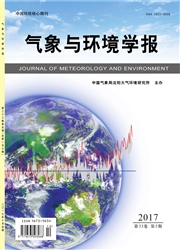

 中文摘要:
中文摘要:
利用美国风暴分析预报中心开发的中尺度模式ARPS(Advanced Regional Prediction System)的资料分析系统ADAS(ARPS Data Analysis System),将中国CINRAD/SA、SB多普勒雷达反射率、FY-2E卫星的红外和可见光资料引入模式初始场,利用高分辨率中尺度模式WRF对2012年7月21日中国华北地区暴雨过程进行数值模拟。结果表明:加入雷达和卫星资料的WRF数值模拟,由于修正了中低层水汽,对降水系统预报有一定的调整,预报的降水落区位置和降水量中心值更接近实况;同时加入卫星和雷达资料同化后,明显改善了WRF降水系统预报偏慢的情况。雷达与卫星资料同化对WRF模式降水预报影响不同,雷达资料影响的时间短,只在6 h内的预报起作用,而卫星资料影响时间较长,能改善24 h内的预报。加入卫星和雷达资料,修正了水汽场,使降水预报在开始时间、量级和范围上均有改善,更接近实况。
 英文摘要:
英文摘要:
Using a mesoscale numerical model ARPS(Advanced Regional Prediction System) data analysis system(ADAS),CINRAD/SA and SB Doppler radar reflectivity and FY-2E satellite data were implemented in the model field.A heavy rainstorm process on July 21 2012 in the north China was simulated using a high resolution mesoscale numerical model(WRF).The results show that the Doppler radar and satellite data are helpful for improving the accuracy of simulated heavy rainfall because of the corrections on the water vapor in lower atmospheric layers /especially for the position of falling area of precipitation and its maximum amount.At the same time,the slow development of prediction by WRF model is improved after adding the assimilated satellite and radar data.Comparison between radar and satellite assimilation suggests that the former can improve the prediction of precipitation within 6 hours,while the latter can improve precipitation forecast within 24 hours.Using the satellite and radar data,precipitation forecast is closer to the observation,especially for the beginning time,intensity and range of precipitation.
 同期刊论文项目
同期刊论文项目
 同项目期刊论文
同项目期刊论文
 期刊信息
期刊信息
